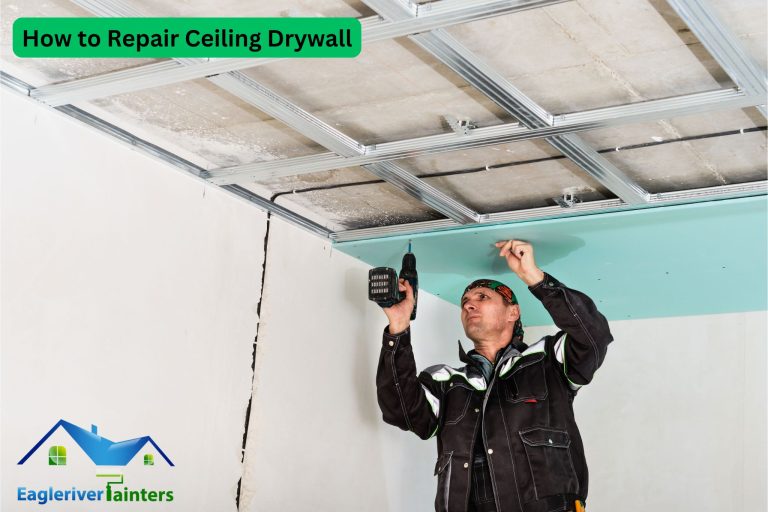Ceiling drywall damage is a common problem in many homes. It can make your ceiling look bad and even cause safety issues. The good news is that most ceiling drywall damage can be fixed with the right steps. Understanding what causes the damage will help prevent future problems. In this guide, we will explain the common causes of ceiling drywall damage and how to repair ceiling drywall quickly and easily.
Common Causes of Ceiling Drywall Damage
1. Water Damage
Water is one of the biggest causes of ceiling drywall damage. Leaks from roofs, pipes, or air conditioners can weaken the drywall, making it sag, stain, or crumble. Mold can also grow on wet drywall, making the problem worse.
How to prevent it:
- Fix leaks as soon as possible.
- Check your roof for missing shingles.
- Clean gutters to stop water buildup.
2. Structural Issues
If your house settles or shifts over time, cracks may form in your ceiling drywall. Poor construction or weak framing can also cause the ceiling to crack or sag.
How to prevent it:
- Use quality materials when building or repairing.
- Keep an eye on small cracks and fix them early.
- Make sure your attic has enough support.
3. Poor Installation
If the drywall was not installed correctly, it may peel, crack, or fall apart over time. Poor taping, weak screws, or not enough support can all lead to damage.
How to prevent it:
- Hire professionals for drywall installation.
- Use strong drywall screws and tape.
- Check for loose or poorly installed sections.
4. Impact Damage
Accidents happen! A hard hit from moving furniture, a ball, or even a person falling against the ceiling can cause holes or cracks.
How to prevent it:
- Be careful when moving heavy objects.
- Use soft pads or guards in play areas.
- Repair small cracks before they become big holes.
How to Repair Ceiling Drywall
Step 1: Gather Your Tools
Before you start, make sure you have:
- Drywall patch or new drywall piece
- Joint compound (also called drywall mud)
- Sandpaper
- Putty knife
- Primer and paint
- Drywall screws (if needed)
Step 2: Remove the Damaged Area
If the drywall is cracked or peeling, cut out the damaged part using a utility knife. Be sure to remove all weak or broken sections.
Step 3: Patch the Hole or Crack
For small cracks:
- Apply joint compound over the crack.
- Smooth it out with a putty knife.
- Let it dry, then sand it smooth.
For larger holes:
- Cut a drywall patch to fit the hole.
- Secure the patch with drywall screws.
- Cover the edges with joint compound and drywall tape.
- Smooth it out and let it dry.
Step 4: Sand and Paint
Once the compound is dry, sand it smooth. Then, apply primer and paint to match your ceiling.
Preventing Future Ceiling Drywall Damage
To avoid drywall problems in the future, follow these tips:
- Fix leaks right away.
- Check your ceiling for cracks or sagging.
- Hire professionals for large repairs.
- Keep your home’s structure strong and stable.
FAQs
Q1. How do I know if my ceiling drywall is damaged?
A: Look for cracks, stains, sagging, or peeling paint. Water spots and mold are also signs of damage.
Q2. Can I fix ceiling drywall myself?
A: Yes! Small cracks and holes can be repaired with joint compound and sandpaper. Bigger holes may need new drywall patches.
Q3. When should I call a professional?
A: If your ceiling is sagging, has large holes, or shows signs of serious water damage, it’s best to call an expert.
Conclusion
Ceiling drywall damage can happen for many reasons, but most problems can be fixed. By understanding the causes and learning how to repair ceiling drywall, you can keep your home looking great. If you need help, don’t hesitate to call Eagleriver Painters. We offer expert drywall solutions, painting, and more. Contact us today!









